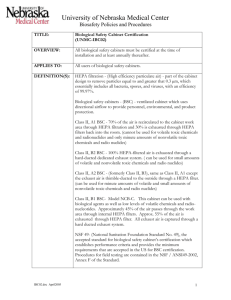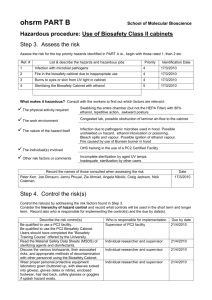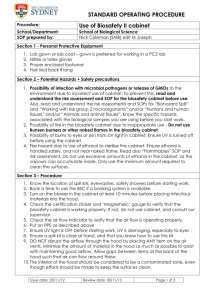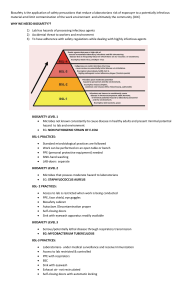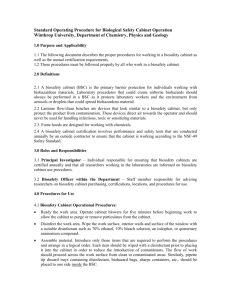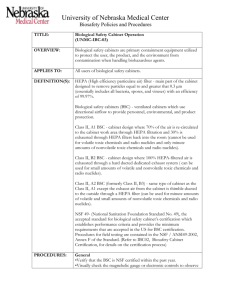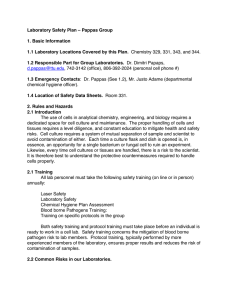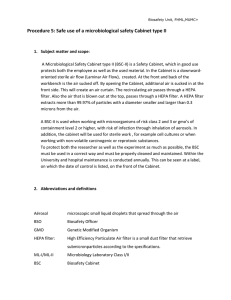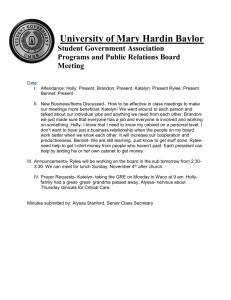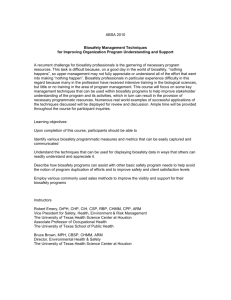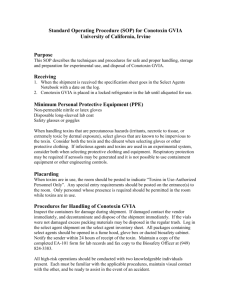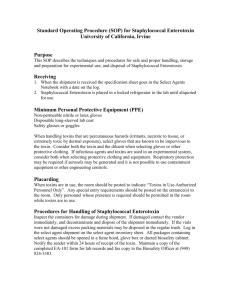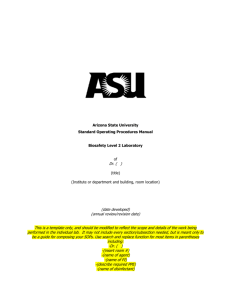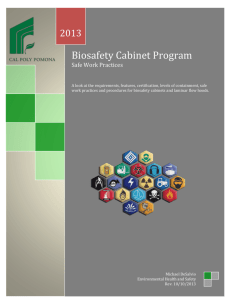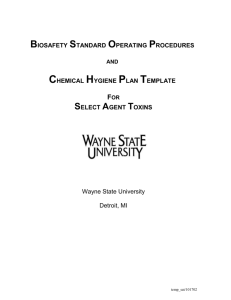Biohazard Safety Cabinets
advertisement
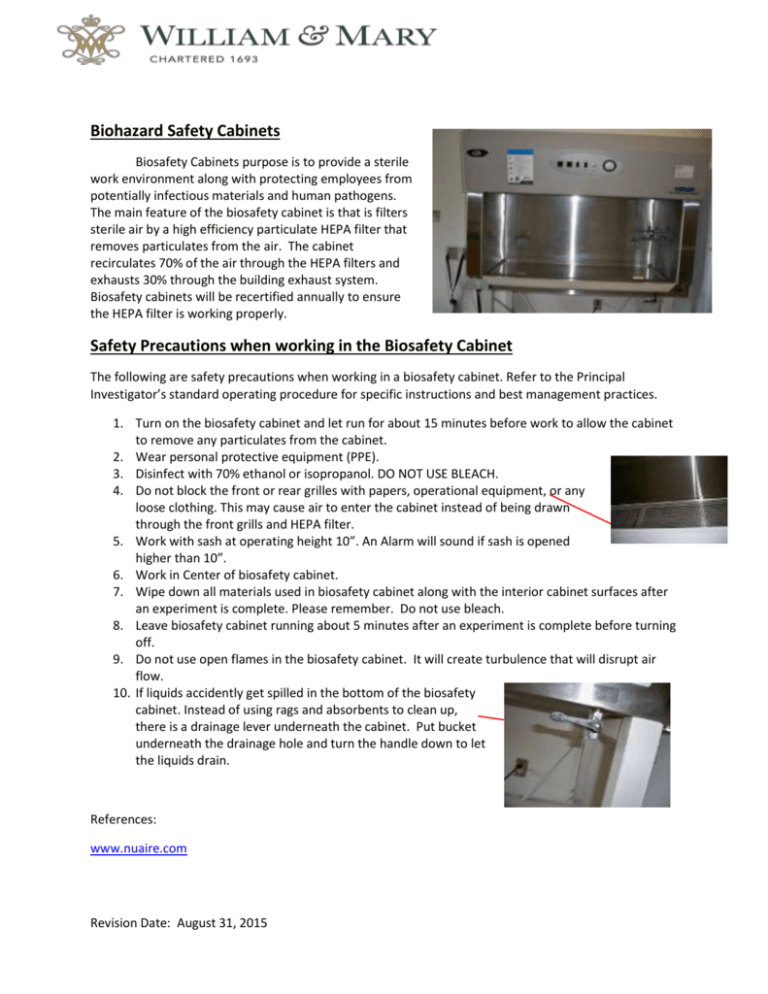
Biohazard Safety Cabinets Biosafety Cabinets purpose is to provide a sterile work environment along with protecting employees from potentially infectious materials and human pathogens. The main feature of the biosafety cabinet is that is filters sterile air by a high efficiency particulate HEPA filter that removes particulates from the air. The cabinet recirculates 70% of the air through the HEPA filters and exhausts 30% through the building exhaust system. Biosafety cabinets will be recertified annually to ensure the HEPA filter is working properly. Safety Precautions when working in the Biosafety Cabinet The following are safety precautions when working in a biosafety cabinet. Refer to the Principal Investigator’s standard operating procedure for specific instructions and best management practices. 1. Turn on the biosafety cabinet and let run for about 15 minutes before work to allow the cabinet to remove any particulates from the cabinet. 2. Wear personal protective equipment (PPE). 3. Disinfect with 70% ethanol or isopropanol. DO NOT USE BLEACH. 4. Do not block the front or rear grilles with papers, operational equipment, or any loose clothing. This may cause air to enter the cabinet instead of being drawn through the front grills and HEPA filter. 5. Work with sash at operating height 10”. An Alarm will sound if sash is opened higher than 10”. 6. Work in Center of biosafety cabinet. 7. Wipe down all materials used in biosafety cabinet along with the interior cabinet surfaces after an experiment is complete. Please remember. Do not use bleach. 8. Leave biosafety cabinet running about 5 minutes after an experiment is complete before turning off. 9. Do not use open flames in the biosafety cabinet. It will create turbulence that will disrupt air flow. 10. If liquids accidently get spilled in the bottom of the biosafety cabinet. Instead of using rags and absorbents to clean up, there is a drainage lever underneath the cabinet. Put bucket underneath the drainage hole and turn the handle down to let the liquids drain. References: www.nuaire.com Revision Date: August 31, 2015


